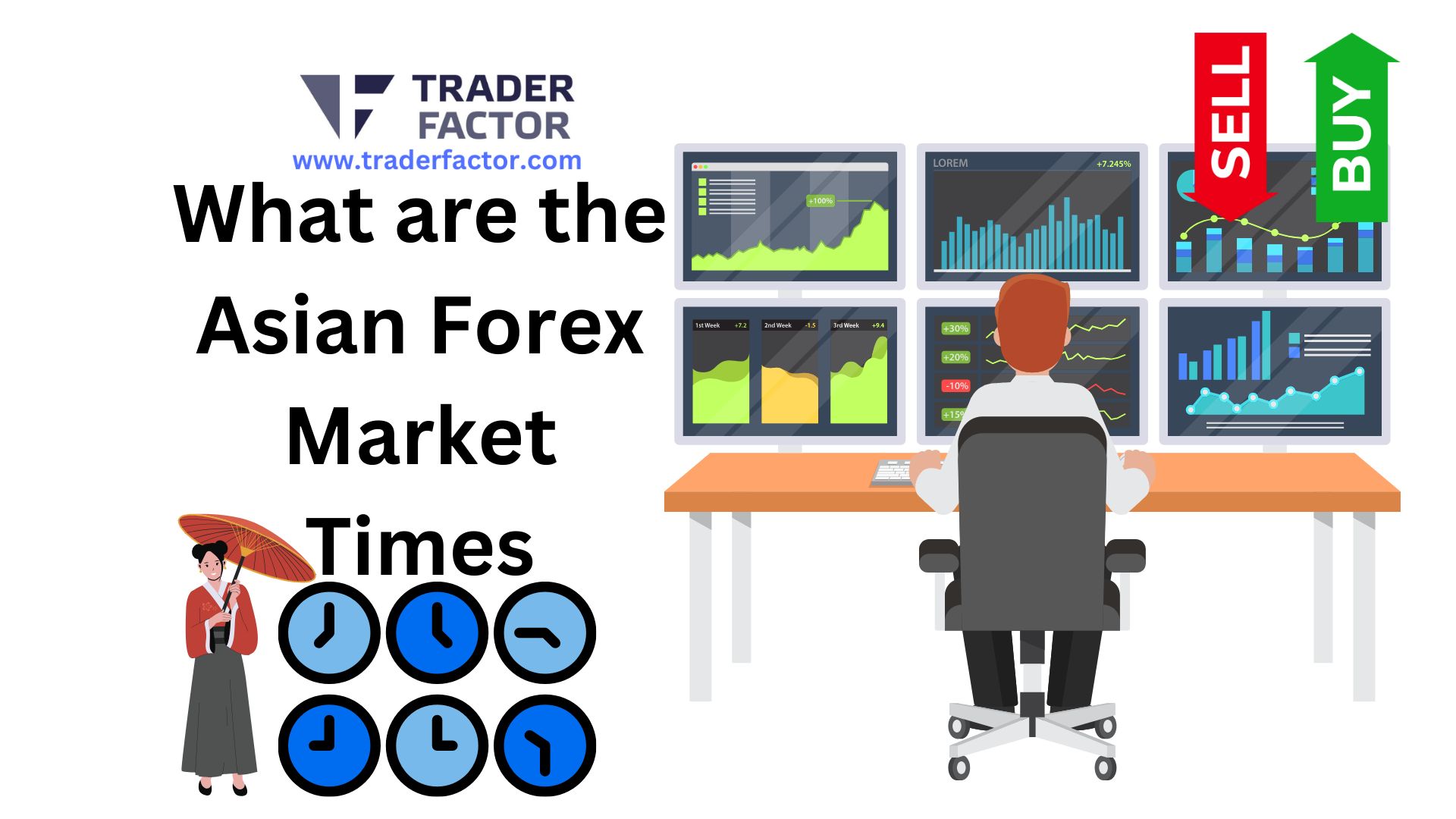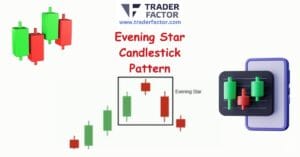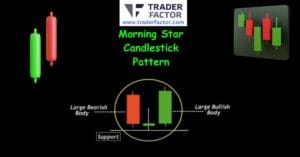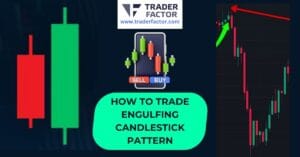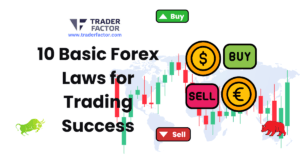Curious about what the Asian market forex times truly entail? Understanding the Asian trading sessions can provide valuable insights into market movements and potential trading opportunities. Dive into the Tokyo session’s key trading hours, explore the Shanghai market for unique prospects, and uncover the factors that drive Asian market fluctuations. Discover how overlapping sessions can shape your trading strategies and optimize your forex trading experience. By delving into the intricacies of the Asian market forex times, you can equip yourself with the knowledge to navigate the dynamic world of forex trading effectively.
Table of Contents
ToggleUnderstanding Asian Forex Market Hours
The foreign exchange market, or forex for short, is a global marketplace where currencies are traded 24/7. But that doesn’t mean activity is constant throughout the day. Instead, the forex market operates in sessions based on the opening hours of major financial centres.
The first session to kick things off is the Asian Forex Market, often referred to as the Tokyo session due to Japan’s dominant role. This blog post will serve as your guide to understanding the Asian market’s forex times and their unique characteristics.
The Asian Forex Market runs from midnight to 6:00 AM Greenwich Mean Time (GMT). This translates to 8:00 AM to 3:00 PM local time in Tokyo. It’s important to note that other Asian countries like Australia also participate, with their session starting a bit earlier (10:00 PM GMT).
Since the forex market operates in a continuous relay race across different time zones, the Asian session overlaps with the later hours of the European session (London) and the very early hours of the North American session (New York). These overlapping periods often see increased activity due to participation from both regions.

To understand Asian forex market hours, consider the trading sessions’ timing and impact. As noted, the Asian forex market is active during the Tokyo session, which starts at 12:00 AM GMT and overlaps with the Sydney session. This overlap increases trading volume, especially for currency pairs like AUD/JPY and AUD/USD.
The Tokyo session is known for its liquidity and efficiency, making it a prime time for traders looking to capitalize on price movements.
This means there may be fewer buyers and sellers for a particular currency pair, potentially leading to wider spreads (the difference between the buying and selling price).
However, don’t underestimate the importance of the Asian session. Scheduled economic news releases from the region, particularly from China and Japan, can have a significant impact on currency valuations. Savvy traders pay close attention to these announcements to capitalize on market movements.
Understanding the dynamics of Asian market hours can help you strategically plan your trades and take advantage of the opportunities presented. Monitor market developments and fluctuations in currency pairs to make informed decisions during the Asian trading session.
Tokyo Session: Key Trading Hours
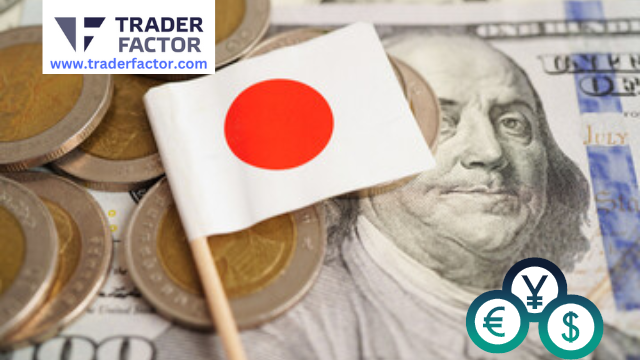
When do the key trading hours of the Tokyo Session occur for Forex trading in the Asian market? The Tokyo Session, one of the key markets in Forex trading, opens at 12:00 AM GMT and closes at 9:00 AM GMT. These hours coincide with the business hours in Tokyo, Japan, making it a crucial time for trading as it overlaps with other major sessions like London. During the Tokyo Session, traders can expect higher liquidity, especially when there’s an overlap with the London Session. This increased liquidity can lead to more opportunities for trading and potentially tighter spreads. Understanding the dynamics of the Tokyo Session is essential for traders looking to capitalize on market movements during these key hours.
Key Currency Pairs to Watch During the Tokyo Session
The Tokyo session is a haven for traders interested in currencies tied to the Asian economic landscape. The Japanese Yen (JPY) takes centre stage, featuring prominently in pairs like USD/JPY (US Dollar vs. Japanese Yen) and EUR/JPY (Euro vs. Japanese Yen). Additionally, the Australian dollar (AUD) has seen significant action due to Australia’s early participation in the Asian session. These pairs often react strongly to economic news releases from the region.

Mastering the Tokyo Session: Tips for Forex Triumph
Conquering the Tokyo session requires a strategic approach. Here are some key tips:
- Be an Early Bird: Align your trading schedule with the Tokyo session hours to capitalize on potential opportunities.
- Embrace the News: Stay updated on scheduled economic news releases from Asian economies, particularly China and Japan.
- Mind the Spreads: Wider spreads are more common during the Tokyo session. Factor this cost into your trading decisions.
- Start Small: If you’re new to the Tokyo session, consider starting with smaller trade sizes to manage risk while you gain experience.
Shanghai Market: Trading Opportunities
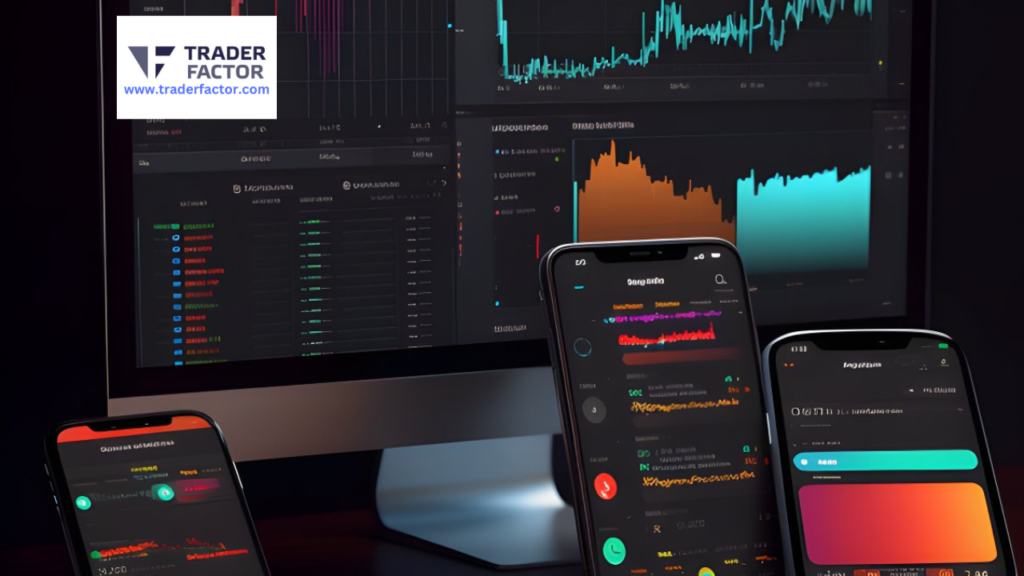
During the Shanghai trading hours, you can explore various trading opportunities in the Asian market. The Shanghai market offers a dynamic environment for forex trading, with various instruments and assets to consider. Engaging in market analysis during these hours can reveal potential trends and patterns that might present profitable trading opportunities. Monitor key economic indicators and news releases that could impact the Shanghai market and influence your trading decisions.
Remember, the Asian market isn’t a monolith. Australia, another key player, joins the party a bit earlier at 10:00 PM GMT. The beauty (and potential challenge) of the forex market lies in its interconnected nature. The Tokyo session gracefully overlaps with the tail end of the European session in London and the very early hours of the North American session in New York. These overlapping periods witness a surge in activity as traders from both regions participate, creating a more dynamic trading environment.
A Diversification Powerhouse:
The Shanghai market offers a compelling opportunity to diversify your forex portfolio. Here’s how:
- Chinese Yuan (CNY) Pairs: Move beyond the traditional USD, EUR, and JPY pairings and gain exposure to the ever-important Chinese yuan. This allows you to tap into the dynamism of the Chinese economy and potentially capitalize on CNY-specific movements.

Capitalizing on China’s Economic Might:
China’s economic influence is undeniable. The Shanghai market reflects this by being particularly responsive to news and data specific to the region. This targeted focus allows you to:
- Targeted Trading: Tailor your trading strategy to leverage China-centric market movements. By staying updated on Chinese economic releases and events, you can anticipate potential shifts in the market and make informed trading decisions.
Unveiling Broader Market Correlations:
While the Shanghai market is distinct, it also connects to broader Asian and global trends. Understanding these correlations can be advantageous:
- Confirmation Signals: Identify potential confirmation signals for your existing trades. If a trend emerges in Shanghai that aligns with a broader market movement, it can bolster your confidence in your trading decisions.
Exploring Instruments Beyond Currencies:
The Shanghai market offers more than just currency pairs to explore. Here’s how to expand your horizons:
- Exchange Traded Funds (ETFs): Consider ETFs that track Chinese stock indices. This allows you to participate in the growth of specific sectors within the Chinese economy and potentially magnify your returns.

Market Analysis: Uncovering Early Trends and Technical Opportunities:
- Early Trend Identification: The Shanghai market can sometimes foreshadow broader Asian market movements. By analyzing market data during Shanghai hours, you might identify trends early, giving you a potential edge in your trading strategy.
- Technical Analysis Windfall: Lower liquidity during Asian sessions can sometimes lead to more pronounced technical chart patterns. Skilled traders can leverage this for technical analysis strategies, potentially profiting from predictable price movements based on historical data.
Remember: Stay Informed, Manage Risk:
- Monitor Key Indicators: Follow economic data releases and news reports relevant to the Chinese economy closely. These can significantly impact the Shanghai market and influence your trading decisions.
- Mind the Spreads: Wider spreads are more common during Asian sessions. Factor this cost into your trading decisions and consider starting with smaller trade sizes, particularly if you’re new to the Shanghai market.
Factors Influencing Asian Market Movements

Understand the volatility of the Asian markets by analyzing key economic indicators and news releases to anticipate market movements. Economic indicators such as GDP growth rates, inflation figures, and employment data are crucial in influencing market volatility in Asia. Geopolitical events like trade tensions, political instability, and regional conflicts can also significantly impact market sentiment and lead to sudden price fluctuations. By staying informed about these factors and monitoring market reactions to various news releases, you can better assess the potential direction of Asian market movements. Remember to remain vigilant and adapt your trading strategies accordingly to navigate the dynamic landscape of the Asian forex market.
Overlapping Sessions: Trading Strategies-Asian Market Forex Times
The Asian Forex Market isn’t an isolated entity. It gracefully overlaps with the tail end of the European session in London and the early hours of the North American session in New York. These overlaps create dynamic environments ripe for strategic trading approaches:
- Increased Liquidity: The influx of traders from both regions significantly boosts liquidity, tightens spreads, and offers more favorable trading conditions than purely Asian session hours.
- Heightened Volatility: The convergence of trading activity can increase market volatility. This presents the potential for capturing significant price movements but also demands robust risk management strategies.
- Confirmation Signals: Overlapping sessions can test broader trends. If a trend observed during the Asian session is reinforced by increased activity in the London or New York overlap, it can bolster confidence in that trend and potentially guide your trading decisions.

Strategic Approaches for Overlapping Sessions
With the unique characteristics of overlapping sessions in mind, here are some strategic approaches to consider:
Focus on News-Driven Pairs
Economic data releases from both Asia and Europe can significantly impact currency pairs during the Tokyo-London overlap. Stay updated on key economic releases and tailor your trades to capitalize on potential market reactions.
Example: EUR/JPY and German Retail Sales
Let’s consider the popular EUR/JPY (Euro vs. Japanese Yen) pair during the Tokyo-London overlap. Imagine a scenario where:
- Japan Releases Positive Data: Early in the morning (Tokyo time), Japan releases positive economic data, suggesting a strengthening Japanese economy. This could put upward pressure on the Japanese Yen (JPY) against other currencies.
- Germany Retail Sales on Deck: Later during the overlap period, Germany, a major player in the European session, is scheduled to release its retail sales data. Strong German retail sales figures could indicate increased consumer spending and potentially strengthen the Euro (EUR).
Strategic Approach:
By staying updated on these upcoming economic releases, you can tailor your trading strategy for the EUR/JPY pair during the Tokyo-London overlap.

- Scenario 1: JPY Strength & Weak Euro: If the positive Japanese data outweighs any potential weakness in the Euro from German retail sales, you might anticipate a short position on EUR/JPY. This means you would borrow Euros and sell them, hoping to repurchase them later at a lower price (after the JPY strengthens) to return your loan and pocket the difference.
- Scenario 2: EUR Strength & Weak JPY: If the German retail sales data is surprisingly strong, signaling a robust Eurozone economy, it could counter the positive data from Japan and potentially strengthen the Euro against the Yen. In this case, you might consider a long position on EUR/JPY. This means you would borrow Yen and buy Euros, hoping to sell them later at a higher price (after the Euro strengthens) to return your loan and profit from the price increase.
Overlaps: A Boost for Technical Analysis
The increased volatility during overlaps can sometimes lead to more pronounced technical chart patterns. Skilled traders can leverage this for technical analysis strategies, potentially profiting from predictable price movements based on historical data.
Imagine the Tokyo session as the opening act, warming things up. Then, London and New York join in during the overlap, turning things up a notch. This surge in activity can lead to more pronounced technical chart patterns, those recognizable shapes and lines that hint at future price movements.
Why are Overlaps Good for Technical Analysis?
- More Data Points: The combined trading activity from multiple regions creates a richer data set. This translates to more data points on your charts, potentially strengthening the validity of the technical patterns that emerge.
- Volatility Magnifies Movements: Increased volatility can act like a magnifying glass for technical patterns. Subtle trends or support/resistance levels become more visible, offering clearer entry and exit points for your trades.

A Technical Trader’s Toolkit for Overlaps
For skilled traders, these amplified technical patterns become opportunities:
- Identifying Trends: Overlapping sessions can help confirm or negate tentative trends observed during the Asian session. If a trend strengthens during the overlap, it suggests more traders are jumping on board, potentially increasing its validity.
- Spotting Support and Resistance: The surge in trading activity can solidify support and resistance levels on the charts. These levels act like price boundaries, with support potentially halting price declines and resistance potentially capping price increases. By identifying these levels during overlaps, you can position your trades to take advantage of potential price reversals.
- Playing the Breakouts: Technical breakouts occur when prices surge past established support or resistance levels. The increased volatility during overlaps can sometimes trigger these breakouts, offering opportunities to capitalize on strong directional moves.
Scalping

The fast-paced nature of overlapping sessions can be ideal for scalp trading strategies. This involves taking advantage of small, short-term price movements for quick profits. However, this strategy requires a high degree of discipline and risk management.
Using a scalping strategy during the Asian-New York session overlap involves capitalizing on the unique market conditions present during this time. While this overlap is shorter and typically sees less volatility compared to the London-New York session overlap, it still offers opportunities for quick, small gains.
Here’s how you can apply a scalping strategy effectively during this period:
1. Preparation and Research
- Understand Market Conditions: Familiarize yourself with the general behavior of the market during this overlap. This includes knowing which currency pairs are more likely to provide trading opportunities, considering pairs that involve the USD and Asian currencies like USD/JPY, AUD/USD, and NZD/USD.
- Economic Calendar: Review the economic calendar for any news releases scheduled during this time. News from the U.S. can particularly lead to sudden market movements, providing scalping opportunities.

2. Setting Up Your Trading Platform
- Technical Indicators: Set up technical indicators that can help identify short-term trends and potential entry and exit points. Moving averages, Bollinger Bands, RSI, and MACD are popular among scalpers for their ability to highlight momentum and volatility.
- Price Alerts: Use price alerts for levels of interest so you can quickly enter or exit trades without having to constantly monitor the market.
3. Identifying Trading Opportunities
- Look for Volatility: Even though the Asian-New York overlap is less volatile, certain events or the tail end of the Asian session can still cause price movements. Be on the lookout for sudden moves that might create scalping opportunities.
- Support and Resistance Levels: Identify key support and resistance levels from the Asian session. These levels can often hold or break at the start of the New York session, providing entry points for scalpers.
- Liquidity: Remember, liquidity is starting to increase, but it’s not at its peak during this overlap. Be mindful of spread widening which can affect your trade execution and costs.
4. Executing Trades
- Quick Decisions: Scalping requires fast decision-making. Enter trades when your set criteria are met without hesitation and be ready to exit quickly to lock in gains or cut losses.
- Risk Management: Use tight stop-loss orders to minimize potential losses. Given the quick nature of scalping, it’s crucial to have pre-defined risk parameters.
- Profit Targets: Set small, realistic profit targets. Since this strategy involves making many trades, even small profits can add up over time.

5. Post-Trade Analysis
- Review Your Trades: After the trading session, go through your trades to identify what worked and what didn’t. This will help you refine your strategy over time.
- Adjust Strategy as Needed: Market conditions change, and so should your strategy. If certain indicators or setups are consistently failing, consider adjusting your approach.
Hedging

Using a hedging strategy during the Asian-New York session overlap in forex trading involves employing techniques to protect against unwanted currency movements while potentially benefiting from certain market conditions. Given the specific context of the Asian-New York session overlap, which sees the closing of markets in Asia and the opening in New York, traders can face unique volatility patterns and liquidity conditions. Here’s how you can implement a hedging strategy during this time:
1. Identify Currency Pairs with Correlation
First, it’s crucial to identify currency pairs that show a significant correlation, either positive or negative, during the Asian-New York overlap. For example, USD/JPY and AUD/USD often display notable movements due to their ties to both the U.S. and Asian economies. By understanding these correlations, you can better anticipate how pairs might move in relation to each other during this period.
2. Employ Direct Hedging
Direct hedging involves opening two opposing positions on the same currency pair. For instance, if you have a long position on USD/JPY and anticipates short-term volatility or potential downside risk during the overlap, they might open a short position on the same pair. This strategy aims to mitigate losses if the market moves unfavorably but can also limit potential gains. It’s particularly useful if you wish to keep the original position open through uncertain market periods without incurring significant losses.

3. Use Correlated Hedging
This strategy involves opening a position on a second currency pair that is correlated to the first. If you hold a position in AUD/USD and anticipates risk, you might take an opposing position in a correlated pair like NZD/USD. The idea is that movements in these correlated pairs can offset each other. However, it’s important to note that correlation does not guarantee identical moves, and discrepancies can lead to unexpected results.
4. Strategic Use of Forex Options
Forex options allow traders to hedge against potential adverse movements in currency prices. You may purchase options to sell a currency pair at a predetermined price, protecting against downside risk. This method is particularly useful for managing risk during volatile periods like the Asian-New York overlap when economic news from the U.S. can trigger sudden market movements.
5. Monitoring Economic Releases and News
Economic releases and news events significantly influence currency markets. Traders should stay informed about scheduled news releases during the overlap period, as these can trigger rapid and significant price movements. By anticipating potential market reactions to news, you can adjust their hedging strategies accordingly to protect their positions or capitalize on expected market movements.
Overall, to effectively capitalize on overlapping sessions in the Asian forex market, prioritize identifying key trading strategies for maximizing profit potential. During overlapping sessions, market volatility increases, presenting opportunities for traders to execute quick trades using scalping techniques. Scalping involves making numerous small trades to profit from small price movements. When the Asian market overlaps with other major market sessions, such as the European or U.S. sessions, there’s increased liquidity and price movement, making it an optimal time for scalping.
Frequently Asked Questions
Who Are the Best Forex Brokers?

Discover our curated list of reputable and extensively regulated forex brokers tailored for various trading styles:
OneRoyal: Distinguished for its social trading platform, OneRoyal offers many educational resources alongside a convenient demo account for practice. Traders can opt for a maximum leverage of 1:1000 and are eligible for a 100% deposit bonus. With a OneRoyal account, traders can access advanced tools such as CopyTrading with Hoko Cloud, Trading Central, MT4 Accelerator, VPS Hosting, and Trading Calculators. OneRoyal adheres to regulations by AFSL-ASIC, CySEC, VFSC, and FSA.

IronFx: Known for its user-friendly platform and effective risk management tool, IronFx enables traders to more efficiently control their trading risks. The leverage available reaches up to 1:1000, accompanied by a 100% deposit booster. Live account holders benefit from tools like TradeCopier, Trading Central, AutoTrade, and VPS Hosting. IronFx complies with regulatory standards set by FCA, CySEC, FSCA, and BMA.

Admirals: Admirals is renowned for its superior customer support and extensive educational offerings. Traders can leverage up to 1:500, qualify for VIP account conditions, and receive CashBack on every trade. The suite of tools available to live account holders includes MetaTrader Supreme Edition, StereoTrader, Trading Central, Premium Analytics, and VPS Hosting. Admirals is regulated by authorities such as FCA, CySEC, AFSL-ASIC, JSC, CIPC, and CMA.

ActivTrades: Offers a user-friendly platform, extensive educational resources, and versatile demo accounts. The highest leverage is 1:400, but only for Professional traders. For retail traders, the max leverage is set to 1:200. Traders can get CashBack and Interest on their free margin funds. With ActivTrades, you can trade with TradingView on their platform ActivTrader. ActivTrades is regulated by FCA, CSSF, CMVM, SCB, and BACEN.

EightCap: EightCap wraps it up with an intuitive platform, top-notch educational materials, and an effective customer support team. The highest leverage is 1:500, and you can get a 10% deposit bonus. With EightCap Forex Broker, you can get trading tools such as TradingView, Crypto Crusher, Capitalise AI, FlashTrader, Acuity, and VPS Hosting. EightCap is regulated by AFSL-ASIC and SCB.

Each broker has been carefully selected to provide you with a secure and enriching trading experience, catering to your trading needs and preferences.
What Are Some Common Mistakes That Traders Make During the Asian Forex Market Hours?
When trading during the Asian forex market hours, common mistakes include impulsive decisions, neglecting risk management, and overlooking market trends. Improve your trading strategies by staying disciplined, managing risks effectively, and staying informed about market movements.
How Does the Asian Market Differ From the European and North American Markets in Terms of Trading Volume and Volatility?
In the Asian market, trading volume and volatility may vary compared to European and North American markets. Adjust your trading strategies accordingly to navigate these differences and capitalize on the unique characteristics of the Asian market.
Are There Any Specific Currency Pairs That Are More Commonly Traded During the Asian Market Hours?
During Asian market hours, the most traded currency pairs tend to reflect market trends. Major pairs like USD/JPY and AUD/USD are commonly traded. Understanding these trends can help you make informed trading decisions.
What Impact Do Major Economic Events in Asia Have on the Forex Market During These Hours?
During Asian market hours, major economic events in Asia can significantly impact the forex market. Economic indicators and market sentiment play a crucial role in shaping trading strategies and risk management. Stay informed to navigate these fluctuations effectively.
How Do Political Developments in Asian Countries Affect Currency Movements in the Forex Market?
When political events occur in Asian countries, they can impact currency movements in the forex market. Economic indicators, market sentiment, and technical analysis are crucial in assessing how these developments may influence trading decisions.
Conclusion
Now that you understand the Asian market forex times, you can take advantage of key trading hours in Tokyo and Shanghai. By being aware of the factors influencing Asian market movements and utilizing overlapping sessions, you can develop effective trading strategies. Keep an eye on market trends and stay informed to make informed decisions and maximize your trading opportunities in the Asian forex market. Happy trading!
Disclaimer:
All information has been prepared by TraderFactor or partners. The information does not contain a record of TraderFactor or partner’s prices or an offer of or solicitation for a transaction in any financial instrument. No representation or warranty is given as to the accuracy or completeness of this information. Any material provided does not have regard to the specific investment objective and financial situation of any person who may read it. Past performance is not a reliable indicator of future performance.

